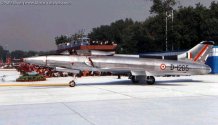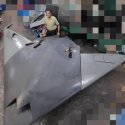You are using an out of date browser. It may not display this or other websites correctly.
You should upgrade or use an alternative browser.
You should upgrade or use an alternative browser.
Indian Military News, Reports, Data, etc.
- Thread starter bd popeye
- Start date
Is there anyone here can substantiate what the heck is the Indian Army doing against these people?
Torture. They already launched investigation tho.
A sure sign of how AMCA is going to turn out: A SURE FAILURE.
I thought Indias vaunted military and being the largest democracy would show China and the world for that matter in how to handle ISLAMIST insurgency without resorting to some form of torture.
The article claims the Sig Sauer 716 was cheaper than the AK-203 (yeah right totally believable). That each Sig cost Rs 72,782 vs Rs 86,000 for each AK-203 built in India. But then it claims the second purchase of the Sig rifles cost Rs 115,069 each. So which one was supposed to be cheaper?A sure sign of how AMCA is going to turn out: A SURE FAILURE.
The article author seems to be unaware that it always costs more to build a small amount of rifles yourself with a license than just buy them from the manufacturer. You have to pay for a new factory, instead of using one that is already amortized. But if India wants to equip its whole army and wants a reliable supply, of course they need their own factory.
As for his claims that it would be impossible to have a rifle with multiple calibers by changing the gun barrel, well that is basically what the AK-200 series is. You have 5.56x45mm NATO (AK-201) and 7.62x39mm Soviet (AK-203) with minimal changes.
Not being ambitious enough have never been India's problem..India's new goal is even more ambitious: developing a 120kN engine of similar size to the GE F414 but lighter. This time, India aims to co-develop this engine, likely partnering with France.
The historical development problems comes (partially at least) from refusing to acknowledge it's own position both in regards to the maturity/capability of various indigenous industry's and the available funds. If you overestimate both you will set over ambitious goals that had no chance of succeeding from the beginning.
If you want to make your air force indigenous you start with the easiest platforms - Trainers and work your way up, perhaps with licensed made foreign fighters ass your next step.
India is still on step one and have not replaced it's trainer planes with indigenous ones despite being in development since the 90s (still using a french engine) and
Instead of focusing it's efforts on completing step one India starts more and more ambitious projects, starting a fifth gen AMCA program in 2010 when you 13 years later have not made even an indigenous trainer shows the disparity between envisioned capability and reality.
Something strange is happening again with that vertical stabilizer:No further explanation needed
This is the one we saw, without vertical stabilizer
But there's also this video that also emerged at around the same time:
Two different test flights one with it installed and one without?
The one with vertical stabilizer installed is probably an old video.Something strange is happening again with that vertical stabilizer:
This is the one we saw, without vertical stabilizer
But there's also this video that also emerged at around the same time:
Two different test flights one with it installed and one without?
India has been manufacturing fighter jets since the 1960s. It was the first country in Asia to conceive, create, and introduce an indigenous fighter jet. This jet, named HF-24 Marut, was also the world's first supersonic fighter jet. However, due to the unavailability of a suitable engine, the project was abandoned. Subsequently, India initiated the development of the Kaveri engine and the Tejas aircraft.Not being ambitious enough have never been India's problem..
The historical development problems comes (partially at least) from refusing to acknowledge it's own position both in regards to the maturity/capability of various indigenous industry's and the available funds. If you overestimate both you will set over ambitious goals that had no chance of succeeding from the beginning.
If you want to make your air force indigenous you start with the easiest platforms - Trainers and work your way up, perhaps with licensed made foreign fighters ass your next step.
India is still on step one and have not replaced it's trainer planes with indigenous ones despite being in development since the 90s (still using a french engine) and
Instead of focusing it's efforts on completing step one India starts more and more ambitious projects, starting a fifth gen AMCA program in 2010 when you 13 years later have not made even an indigenous trainer shows the disparity between envisioned capability and reality.

The SWIFT drone represents the 1/10 scale test model for the upcoming 15-ton GHATAK UCAV drone. The initial design included vertical stabilizers, while the subsequent design omitted them. Multiple tests are scheduled for this smaller-scale model before progressing to the larger one. The intended engine for the GHATAK UCAV drone is the Kaveri engine, initially developed for the Tejas aircraft.Something strange is happening again with that vertical stabilizer:
This is the one we saw, without vertical stabilizer
But there's also this video that also emerged at around the same time:
Two different test flights one with it installed and one without?

